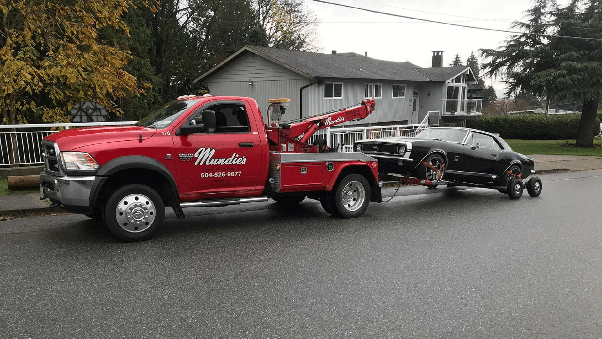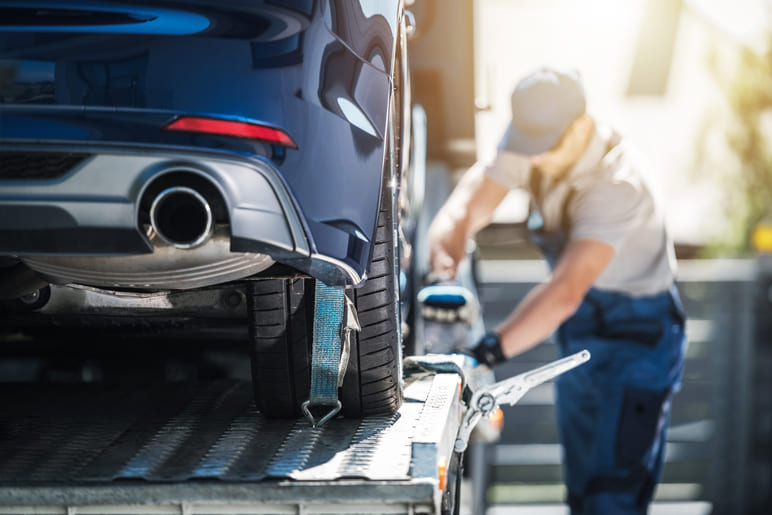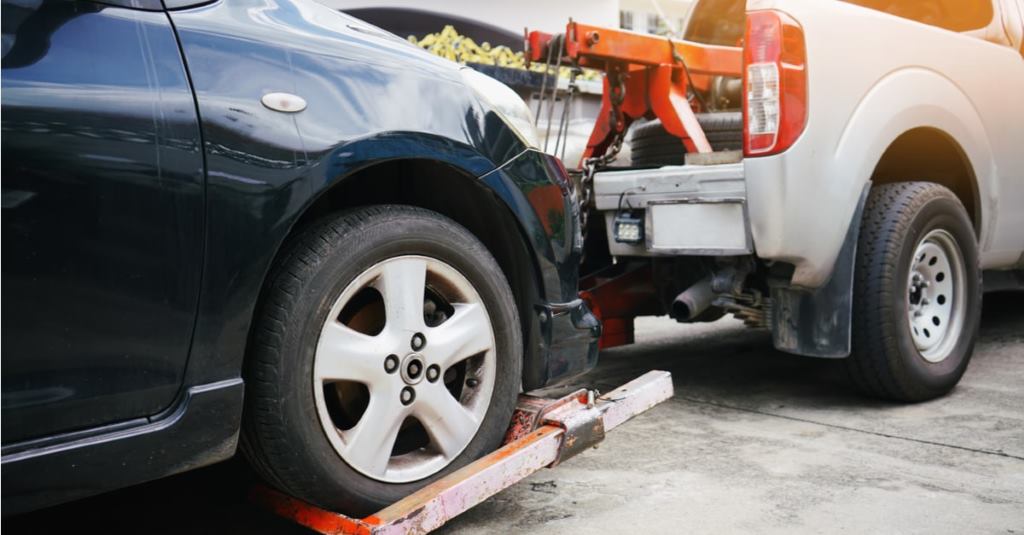When towing an automatic car, safety measures are crucial to prevent damage. Consulting the owner’s manual for manufacturer-specific towing guidelines is essential. Two safe towing methods include flatbed towing, placing the entire car on a trailer, and using a tow dolly, which lifts either the front or rear wheels off the ground. Flatbed towing is generally safer as it avoids transmission or drivetrain strain. For tow dollies, ensuring the transmission is in neutral, the parking brake disengaged, and steering unlocked is vital to prevent damage.
It’s crucial to avoid towing with drive wheels on the ground, as this can harm the transmission. Use proper towing equipment rated for your vehicle’s weight and follow safety guidelines. Drive cautiously, avoiding high speeds, wider turns, and allowing more braking distance. If unsure, seeking professional towing services is advisable to ensure both the vehicle’s and others’ safety on the road.
What are the risks of towing an automatic car’s transmission?

Towing an automatic car incorrectly or without following proper procedures can potentially damage the transmission. Some risks associated with towing an automatic car include:
Transmission damage
Towing an automatic car with the drive wheels on the ground while the engine is off can cause damage to the transmission. When the engine is not running, the transmission’s internal lubrication system may not function correctly, leading to increased friction and potential damage.
Overheating
Towing an automatic car for extended periods without the engine running can cause the transmission fluid to overheat. Without the engine running, the transmission’s cooling system is inactive, leading to increased temperatures that can damage internal components.
Incorrect gear engagement
If the transmission is not in the proper gear during towing, it can cause stress on the gearbox. Improper gear engagement can lead to additional strain and potential damage to the transmission components.
Fluid pump damage
In an automatic car, the transmission fluid pump relies on the turning of the input shaft to circulate fluid. When towing, if the input shaft isn’t turning (as the engine isn’t running), the pump may not function correctly, causing inadequate fluid circulation and potential damage to the transmission.
To mitigate these risks, it’s crucial to follow the manufacturer’s guidelines outlined in the vehicle’s owner’s manual regarding towing procedures for your specific car model. This often includes using a flatbed trailer or a tow dolly that lifts the drive wheels off the ground to prevent transmission damage.
If towing with the drive wheels on the ground is necessary, some vehicles may require the installation of a transmission lube pump or other specific equipment to properly tow the vehicle without causing damage to the transmission.
How to safely tow an automatic car using a tow dolly?
Towing an automatic car using a tow dolly requires careful execution to ensure safety. First and foremost, consult the vehicle’s owner’s manual to understand any manufacturer-specific instructions or limitations related to towing procedures. Prior to loading the vehicle, ensure the tow dolly is set up properly, checking the condition of tire straps, ramps, safety chains, lights, and brakes to confirm they’re in good working order.
Position the tow dolly on level ground, align it straight with the vehicle, and then carefully load the car onto the tow dolly by driving its front wheels onto the dolly until they’re secured in the wheel wells or brackets. Secure the front wheels tightly using the provided straps or chains to prevent movement during towing. Test the tow dolly lights, brakes, and safety connections, and ensure the parking brake is engaged in the towed vehicle. Set the automatic transmission in either the “Park” or “Neutral” position, following the specific recommendations in the owner’s manual.
Additionally, attach safety chains for added security and thoroughly check all connections before beginning to tow. Drive cautiously, maintaining slow speeds and careful maneuvers while on the road, adhering to all traffic rules and safety measures. Always refer to the specific guidelines provided by both the car and tow dolly manufacturers for the safest towing practices. If unsure, seeking professional assistance or guidance from a towing service is advisable.
How to ensure safe towing for an automatic car?

By following these steps and being diligent about adhering to the manufacturer’s recommendations and safety precautions, you can ensure a safe towing experience for your automatic car.
Review the Owner’s Manual
Start by checking the owner’s manual for the specific towing guidelines and limitations provided by the car manufacturer. This includes recommended towing methods, weight restrictions, and any precautions unique to your vehicle.
Choose the Right Equipment
Use appropriate towing equipment such as a flatbed trailer or tow dolly that lifts the drive wheels off the ground. This method is generally safer for automatic cars as it prevents transmission damage.
Secure Attachment Points
Properly secure the vehicle to the towing equipment using straps, chains, or other recommended fasteners. Double-check these connections to ensure they are secure before towing.
Transmission Position
Place the transmission in the recommended setting for towing as per the owner’s manual. It may be “Park” or “Neutral” depending on the vehicle. Always follow the manufacturer’s instructions to avoid damaging the transmission.
Check Lights and Brakes
Ensure all lights on both the towing vehicle and the towed car are functional, including brake lights and turn signals. Test the brakes to ensure they are responsive.
Distribute Weight Correctly
Balance the weight distribution to prevent strain on the towing vehicle and maintain stability during towing. Make sure the load is evenly distributed to avoid swaying or loss of control.
Maintain Safe Speeds
Drive at moderate speeds, avoiding sudden accelerations, decelerations, and sharp turns. Maintain a safe distance from other vehicles on the road.
Frequent Checks
Periodically stop to check the towing equipment, attachments, and the towed vehicle during longer journeys. Ensure everything remains properly secured and in good condition.
Professional Assistance
If you’re unsure about the towing process or have concerns, consider seeking assistance from a professional towing service. They have the expertise and proper equipment to tow your vehicle safely.
Follow Road Regulations
Adhere to all traffic laws and regulations while towing. This includes speed limits, signaling turns, and being aware of the towing vehicle’s increased length and handling characteristics.
FAQ’s
Can you push or tow an automatic car?
Yes, you can push or tow an automatic car, but the method and precautions vary based on the type of transmission and towing equipment used.
How do I protect my transmission while towing?
To protect the transmission while towing, ensure the vehicle is in the appropriate gear (often “Neutral” for automatics), use a flatbed trailer or tow dolly to lift the drive wheels off the ground, and follow the manufacturer’s towing guidelines.
Should you tow in manual or auto?
Towing an automatic car typically involves placing the transmission in “Neutral” to prevent damage, but it’s essential to follow the manufacturer’s recommendations provided in the owner’s manual.
Can you tow an automatic 4×4?
Yes, you can tow an automatic 4×4, but it’s crucial to follow the manufacturer’s guidelines and use the correct towing equipment to avoid transmission and drivetrain damage.
Can you tow an automatic car stuck in park?
Towing an automatic car stuck in park can be challenging. You may need to consult a professional to release the parking brake or find alternative methods to tow the vehicle safely without causing damage.
What gear should I tow in automatic?
In most cases, towing an automatic car requires placing the transmission in “Neutral” to prevent transmission damage. Refer to the owner’s manual for specific instructions for your vehicle.
Final Words
In conclusion, towing an automatic car safely requires careful attention to specific methods and precautions. Using a flatbed for towing is generally safer as it prevents strain on the transmission. Alternatively, employing a tow dolly demands proper precautions like ensuring the transmission is in neutral and the parking brake disengaged.
Always refer to the owner’s manual for manufacturer recommendations, use appropriate towing equipment, and drive cautiously at moderate speeds. If uncertain, seeking professional help ensures the safety of your vehicle and others on the road.

